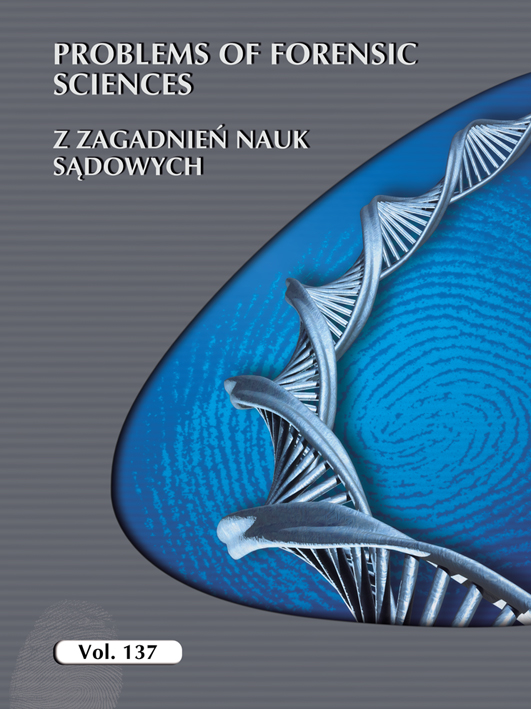Messerer fracture: a comparison of the prevalence of the Messerer fracture between 1980–1984 and 2016–2020 based on materials from the Department of Forensic Medicine in Kraków
Messerer fracture: a comparison of the prevalence of the Messerer fracture between 1980–1984 and 2016–2020 based on materials from the Department of Forensic Medicine in Kraków
Author(s): Gabriela Szypuła, Gabriela Kanclerz, Patrycja Szczepaniak, Maria Komisarz-Calik, Wojciech Koziołek, Tomasz KonopkaSubject(s): Criminology, Demography and human biology, Victimology
Published by: Wydawnictwo Uniwersytetu Jagiellońskiego
Keywords: Messerer fracture; Traffic accident; Fracture; pedestrian victims; Car-pedestrian collision;
Summary/Abstract: Aim: The aim of the study was to compare the incidence of Messerer fractures in the years 1980–1984 and 2016–2020 in the material of the Department of Forensic Medicine in Kraków and to equate it with the available literature.Material and methods: Section protocols collected at the Department of Forensic Medicine in Kraków from 1980–1984 and 2016–2020 were investigated. Cases of car-pedestrian traffic accidents were collected and analyzed.Results: In the 39 cases from 1980–1984, 47 Messerer fractures were present. These reports represented 8.35% of deaths related to car-pedestrian traffic accidents. Among 9 women, Messerer fracture was generally observed in the right femur (41.67%), and the base of the wedge was lateral (41.67%). Whereas among 30 men, it was mainly located in the right femur or tibia (25.71% each). Alcohol was detected among 17 people. While in the 34 postmortem reports from 2016–2020 (15.38% of fatal strikes by a car), 43 Messerer fractures were present. They were usually located in the right tibia (39.5%), then in the right fibula (20.9%) and in the left tibia (14%). The bases of the wedges were mostly lateral (51.2%) and anterior (14%). In contemporary protocols, alcohol was detected among 22 people.Conclusions: Contrary to the literature data Messerer fractures occur in modern times almost twice as often as in the 80’s. Some differences regarding localization in lower extremities or wedge orientation can be observed.
Journal: Problems of Forensic Sciences
- Issue Year: 2024
- Issue No: 137
- Page Range: 69 - 79
- Page Count: 11
- Language: English

